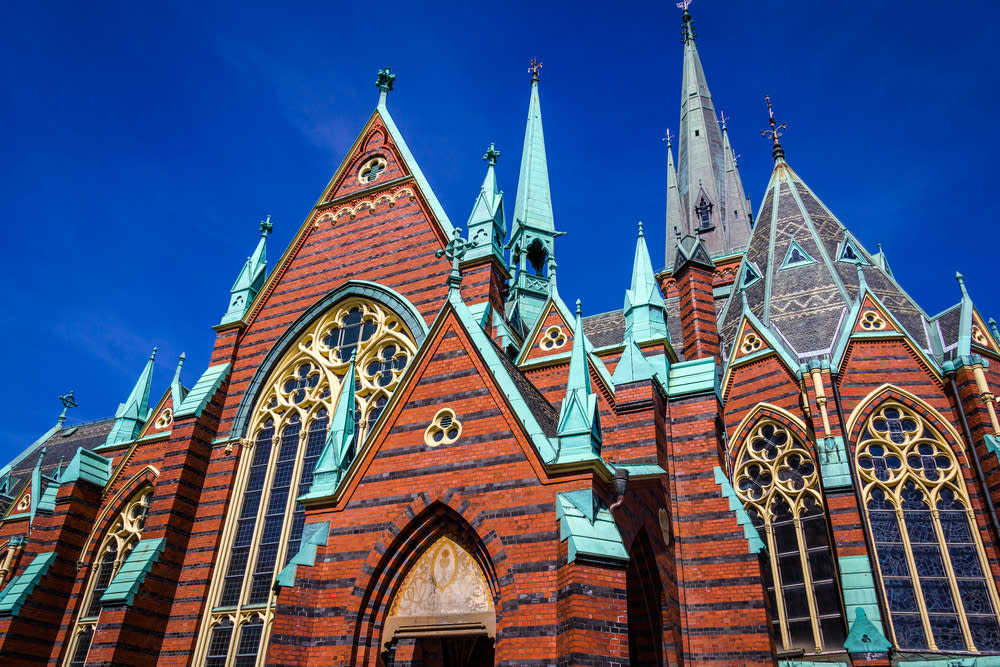More from Gothenburg
Main Menu
- 00:00
- 06:00
- 12:00
- 18:00
- 23:00
Gothenburg : Next 24-Hour Weather
Today - 24th April 2025
Sunrise 05:38
Sunset 20:44
Tomorrow - 25th April 2025
Sunrise 05:38
Sunset 20:44
Holiday Weather Now
Sorted by popularity:
Updated at 10:01 GMT
-
Temp feels like14°C57°F
-
Length of day15h 06m
-
Pressure30" (1020 hpa)
-
Visibility10 km (6miles)
-
Wind speed8 km/h
Sunrise 05:38
Sunset 20:44
-
Temp feels like:
14ºC (57 ºF)
-
Length of day:
15h 06m
-
Pressure:
30" (1020 hpa)
-
Visibility:
6 miles (10 km)
-
Wind speed:
8 km/h
Gothenburg is one of Swedenâs warmest cities thanks to its position on the west coast which is met by the warming <?xml:namespace prefix = st1 />Gulf Stream. This gives it a mild temperate maritime climate with all four seasons but a small temperature range. Winters are long and cold and summers are mild. While the temperature is range is small, because it falls either side of freezing, the variation between the seasons is very marked. Average temperature ranges from a high of 20°C in July to a low of -4°C in December. But perhaps the biggest difference is the length of the day, which varies from over 18 hours in summer to 6.5 in winter. It only really gets dark for a couple of hours in summer.
It is somewhat sheltered by the mountains of Norway and Denmark so doesnât receive as much precipitation as it might, though rain can be expected at any time of year; rainfall is about 800mm on average.
Summer is a great time to visit Gothenburg. The city is alive with locals and tourists out enjoying the good weather. There is a strong outdoor caf© culture and also a number of vibrant summer festivals, most notably the jazz festival. There are some fine beaches in the area too.
Temperatures in mid-summer are often in the low 20s, although it is not uncommon for them to rise up to the high 20s on sunny days. Thanks to the long hours of daylight, the nights only cool to an average of 13°C in the peak months. Rainfall is to be expected quite frequently in summer, although summer downpours are usually over much quicker than at other times of year. July is the wettest summer month, with an average of 76mm.
Winter in Gothenburg is dark, but the city is brightened by a blanket of white snow and becomes an enchanting place. The lack of daylight can be a downer for some but true winter sports enthusiasts ignore it and make use of the snow.
Temperatures are cold but rarely extremely cold. Daily highs winter months donât often get above 2°C or 3°C and the temperature frequently drops below freezing. While very low temperatures are rare they are not unheard of and -20°C has been recorded in the city before. The average low in January and February, the coldest months, is -4°C and the average high is 1°C. Snowfall can occur any time between late November and April, though it is most frequent from December to March. December and January see some snowfall on an average of about 10 days per month.
The weather changes fast in spring and autumn as the large shift between summer and winter weather takes place.
Early spring can still see significant snowfalls and freezing temperatures but by May the beginnings of the summer weather can be enjoyed. Spring is a great time to visit as it is the driest time of year.
Autumn is somewhat wetter; October is the wettest month of the year on average. The nights begin to draw in quickly so youâll be well aware of winterâs approach. While September can still enjoy warm sunny weather, November can see the yearâs first snowflakes.
<?xml:namespace prefix = o />

















